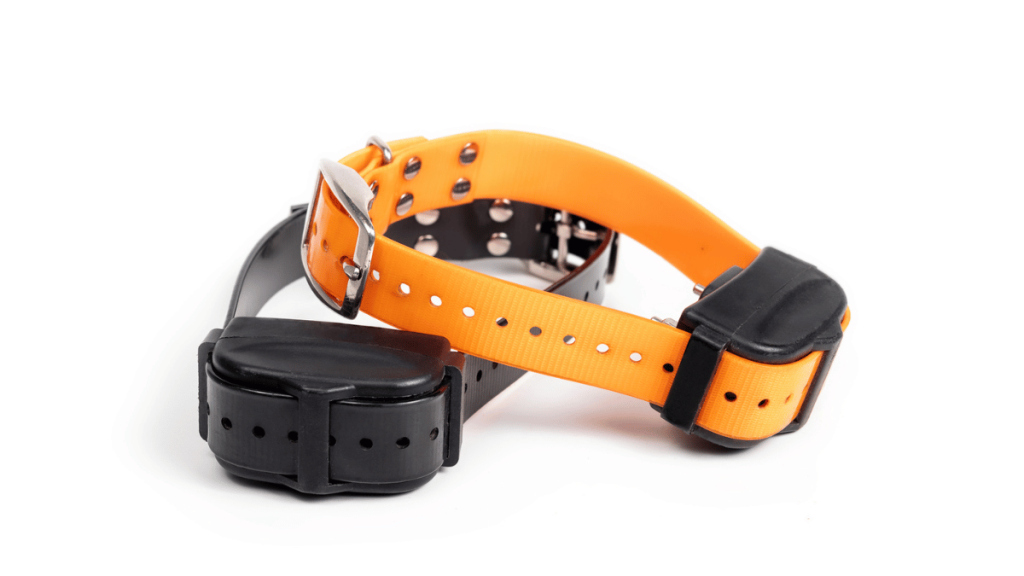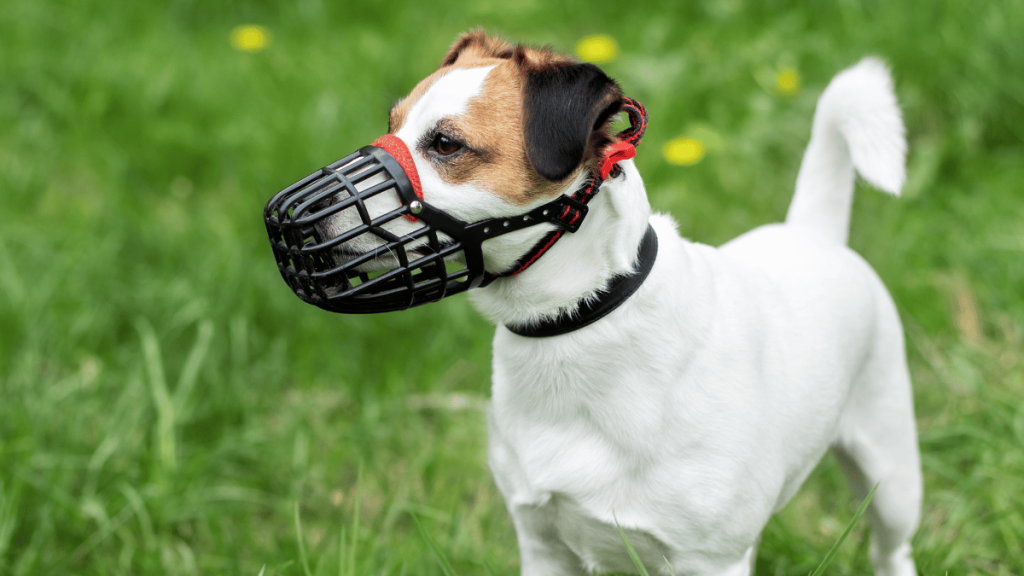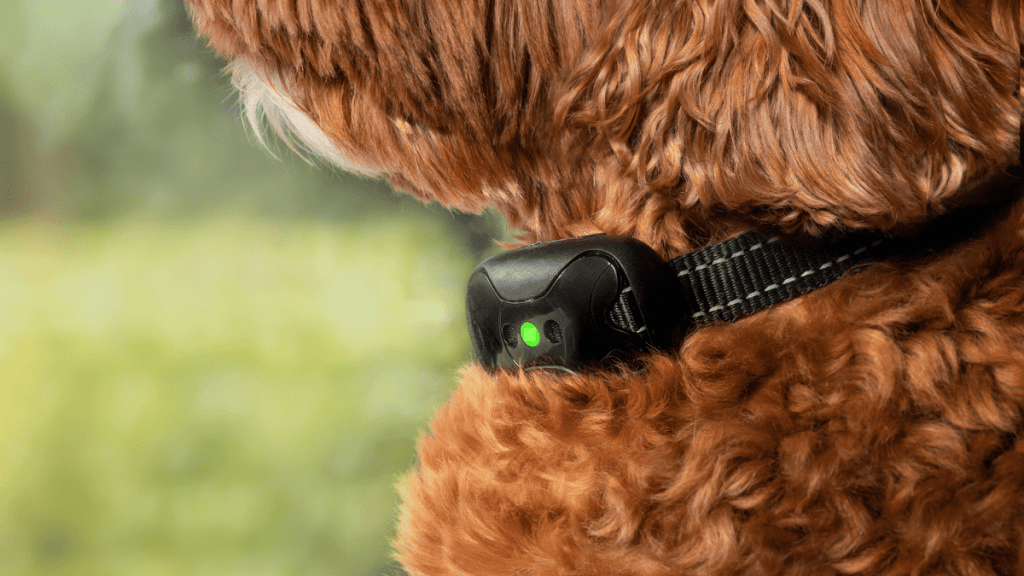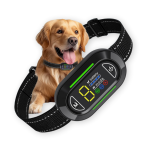When it comes to our furry friends, barking is part of their nature. However, excessive barking can be a challenge for pet parents. That’s where bark collars come into play. If you’re thinking about using a bark collar to help your dog stop barking too much, it’s important to pick the right one and use it the right way. In this article, we’ll walk you through both — how to find the best bark collar for your pup and give you some tips on using it effectively.
Before setting out to buy a bark collar or any other anti-barking device, do try and identify the root cause of your dog’s barking. Is it due to boredom, anxiety, or a medical condition? Once you’ve understood this, it will help you determine if a bark collar is the most appropriate solution.When selecting a bark collar, safety should be your number one priority. Look for collars that use gentle ways to stop your dog from barking excessively, like vibration, sound, or a mix of both. Avoid collars that deliver electric shocks, as they can cause pain and distress to your dog. You must also think about your dog’s type of breed, their size, age, and how sensitive they are when choosing a bark collar. Let’s talk more about these things in detail below.
How To Choose a Bark Collar?
Here are certain factors that you should keep in mind when choosing a bark collar for your pup:
Identify the Root Cause of Barking
Determine if your dog is barking due to boredom, anxiety, or a medical condition. In doing so, you will be better able to address it appropriately. If you’re unsure, consult with a veterinarian or professional trainer.
Consider Your Dog’s Breed
Some breeds, such as herding dogs or terriers, may be more prone to barking much more than others. It is easy to learn about the barking habits of some breeds by reading up on them. Also, their fur plays a role in the effectiveness of the collar; for instance, the best bark collar for Beagles would be different from the best bark collar for Goldendoodles, simply because of the breed’s fur type.
Prioritize Safety
Try to get a collar that uses vibration, sound, or a mix of the two to discourage barking; these approaches should be both humane and effective. Avoid collars that deliver electric shocks. Always choose a collar that is gentle on your dog.
Factor in Your Dog’s Size, Age, and Sensitivity Level
Choose a collar that is appropriate for your dog’s individual characteristics. A larger dog may require a different type of collar than a smaller dog.
Consider Your Dog’s Environment
If your dog is often outdoors, a waterproof collar may be necessary. Ensure the collar can withstand the elements. If you’d like to have more control over when the collar works, you can opt for one of the best automatic bark collars with a remote.
Read Reviews and Do Research
Look for products with positive reviews from other pet owners. Reading reviews online might help you decide which collar is best for you in terms of comfort and efficacy.
Consult With a Veterinarian or Professional Trainer
They can provide personalized advice and recommendations and help you choose the best collar for your dog’s specific needs.
Start With a Lower Intensity Setting
Gradually increase the intensity if necessary, but always monitor your dog’s response. Avoid overwhelming your dog with excessive stimulation.
Use the Bark Collar Consistently
Ensure that your dog associates the bark collar with unwanted barking. Consistent use will help you reinforce the desired behavior in your dog.
Combine the Bark Collar With Other Training Methods
Positive reinforcement and behavioral training can complement the use of a bark collar. You will definitely get better results if you train in a more comprehensive way.
How to Use a Bark Collar Properly?

Once you’ve chosen the best training bark collar for your dog, it is important to use it correctly. Here’s how you can do that:
Read the Instructions
Carefully read the manufacturer’s instructions before using the collar. Familiarize yourself with the collar’s features, settings, and safety precautions.
Proper Fit
Adjust the collar to fit snugly but comfortably around your dog’s neck. Ensure there is enough room to fit two fingers between the collar and your dog’s skin to prevent irritation.
Start with the Lowest Setting
Begin with the lowest intensity or sensitivity setting to gauge your dog’s reaction. Gradually increase the setting if necessary, but avoid using the highest setting unless absolutely needed.
Monitor Your Dog’s Reaction
Observe your dog’s behavior when the collar is activated to ensure it is not causing distress or fear. If your dog shows signs of anxiety or discomfort, reconsider the use of the collar or try a different type.
Consistency is Key
Use the collar consistently during situations where excessive barking occurs. Remove the collar when it is not needed to prevent over-reliance or desensitization.
Combine with Positive Reinforcement
Pair the use of the bark collar with positive reinforcement techniques, such as treats or praise, when your dog remains quiet. Encourage and reward desired behavior to reinforce training.
Limit Usage Time
Do not leave the bark collar on your dog for extended periods to prevent skin irritation or discomfort. Follow the manufacturer’s guidelines on maximum usage time.
Regularly Check the Collar
Inspect the collar regularly for signs of wear and tear. Ensure the batteries are charged or replaced as needed to maintain functionality.
Address Underlying Causes
Identify and address any underlying causes of excessive barking, such as boredom, anxiety, or environmental factors. Use the collar as part of a comprehensive training plan rather than a standalone solution.
Do Vets Recommend Bark Collars?

Veterinarians often have mixed opinions on bark collars, and their recommendations typically depend on the situation. Some may advise using bark collars, especially for extreme barking cases that can’t be controlled by other methods. However, they generally recommend focusing on positive reinforcement techniques as a safer, more effective, and humane approach to training. If you do use a bark collar, it’s best to consult with your specific vet for personalized advice. They can assess your dog’s individual needs and behavior to determine if a bark collar is suitable. Remember, bark collars are not a one-size-fits-all solution, and they should always be used responsibly and in conjunction with other training methods.
Which Anti-bark Collars Work Best?

When it comes to finding the best bark collar for your dog, it’s important to consider the specific needs and characteristics of your pet. Here are some points to help you determine which type of anti-bark collar might work best:
Vibration Collars
- Ideal for sensitive dogs or those who respond well to tactile feedback.
- Provides a gentle vibration to interrupt barking without causing discomfort.
- Suitable for small to medium-sized breeds.
Ultrasonic Collars
- Effective for dogs that are responsive to sound-based training.
- Emits a high-pitched sound that only dogs can hear, deterring barking.
- Works well in quiet environments where the sound can be easily noticed by the dog.
Spray Collars
- Great for dogs that dislike strong scents, such as citronella.
- Releases a burst of spray to deter barking, providing a non-invasive correction.
- Suitable for most breeds and sizes, especially those with a keen sense of smell.
Static Electric Bark Collars
- Best for larger or more stubborn breeds that may not respond to other types of collars.
- Offers adjustable intensity levels to tailor the correction to your dog’s size and temperament.
- Use with caution and ensure it has safety features like automatic shut-off.
Combination Collars
- Offers multiple correction methods, such as vibration and sound, in one device.
- Allows you to switch between modes to find the most effective solution for your dog.
- Versatile and adaptable to different situations and environments.
Choosing the best training bark collar can make a world of difference for you and your furry friend. By knowing what your dog needs, picking a collar that fits their personality, and using it the right way, you can stop them from barking too much. Always remember to combine collar training with positive reinforcement for the best results. If you take your time and put in a little effort, you can make your home a more peaceful place while ensuring your pup stays happy, too. Whether you opt for sound, vibration, or both, the goal is to foster good behavior in a gentle way.
FAQ
How do I choose a good dog collar?
To choose a good dog collar, consider your dog’s size, breed, and activity level. Opt for adjustable collars with sturdy materials like nylon or leather. Ensure the fit is snug but comfortable, with enough space for two fingers between the collar and your dog’s neck.
What age should you use a bark collar?
Bark collars should generally be used on dogs over six months old. At this age, dogs are usually mature enough to understand training cues, and their necks have developed sufficiently to wear the collar comfortably without causing harm or discomfort.
Should a dog wear a bark collar all the time?
No, a dog shouldn’t wear a bark collar all the time. Continuous use can cause discomfort, skin irritation, or desensitization to the training. Limit use to training sessions or when barking becomes excessive, and always follow the manufacturer’s guidelines for breaks.
What are the side effects of a bark collar?
When used extensively, bark collars can cause skin irritation, anxiety, and discomfort. Some dogs may become confused or fearful, associating the correction with other triggers. Additionally, improper use can lead to overcorrection or a loss of training effectiveness.
Can I leave a bark collar on overnight?
It’s generally not recommended to leave a bark collar on overnight. Bark collars should be used as training tools and removed when not in use. Dogs need time to relax without the collar, especially during sleep, when barking is less likely. Always give your dog collar-free breaks to prevent overuse.
Do bark collars work immediately?
Bark collars generally don’t work immediately, as they require some time for your dog to understand the correction and adjust their behavior. Depending on your dog’s temperament and the type of collar, results may vary.
How to choose the right collar?
To choose the right bark collar, consider your dog’s size, temperament, and behavior. Look for collars with adjustable sensitivity, multiple correction modes (like vibration or sound), and safety features. Ensure it’s comfortable, well-fitting, and suitable for your dog’s breed and activity level.
How do I choose a dog training collar?
To choose a dog training collar, assess your dog’s size, breed, and behavior. Decide between options like static, vibration, or ultrasonic based on training needs. Ensure a comfortable fit and seek guidance from a veterinarian or professional trainer for recommendations.
How do you fit a dog collar correctly?
To fit a dog collar correctly, place it around your dog’s neck and ensure it’s snug but not too tight. You should be able to fit two fingers between the collar and your dog’s skin. Adjust it as needed for comfort and safety.
What is the difference between a bark collar and a training collar?
The primary function of a bark collar is to prevent the dog from barking but a training collar can be used for many other purposes. Bark collars often use vibration, sound, or spray, while training collars can be harnesses, headcollars, or traditional collars used for positive reinforcement or correction.
Do bark collars work by sound or vibration?
Bark collars typically work by using a combination of sound and vibration. Some collars may also use spray or other methods to deter barking. The specific method used can vary depending on the type of collar. It’s important to choose a collar that is appropriate for your dog’s sensitivity level and the underlying cause of barking.










